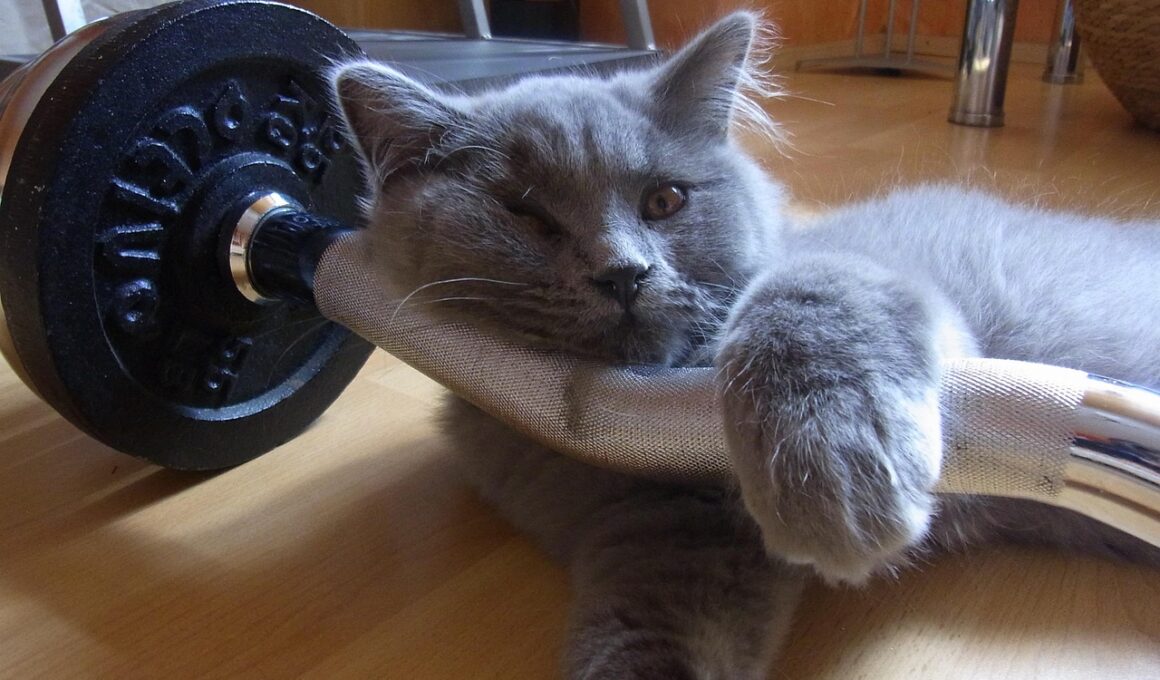Using Treats to Stop Scratching and Other Destructive Behaviors
Cats can exhibit destructive behaviors, particularly scratching furniture, wallpaper, and belongings. Utilizing treats in training is an effective approach to redirect these behaviors. Treats can motivate cats to exhibit desirable actions, fostering good habits over time. To begin with, identify high-value treats your cat enjoys, such as their favorite crunchy snacks or soft treats. It’s essential to ensure that you are consistent during your training sessions. Offer a treat immediately after your cat chooses to scratch the designated scratching post instead of the couch. This action reinforces good behavior and connects it with positive rewards. Create a rewarding atmosphere by providing ample praise alongside treats, as this will help your cat associate good behavior with happiness. Additionally, consider using interactive toys to distract your cat when they attempt destructive scratching. Rather than punishing them, focus on redirecting their energy positively. Integrating these techniques as part of your overall training strategy will lead to a more harmonious home environment.
Understanding cat behavior plays a crucial role in the success of training. Cats have natural instincts to scratch, as it helps them sharpen their claws and mark territory. Instead of completely prohibiting scratching, provide acceptable outlets such as designated scratching posts. Place these posts in areas your cat frequently enjoys scratching. Consistency is key when enforcing the use of treats; always reward the desired action, such as scratching appropriate objects. In addition to treats, you may find that using a gentle voice and positive body language encourages your cat to engage in positive behavior. If your cat still scratches furniture despite your training, try using deterrents such as double-sided tape that will discourage them. This process may take time, but patience will lead to success. Over time, cats learn which items are acceptable for scratching through consistent reinforcement with treats and simple training techniques. Always remember that each cat has a unique temperament and may respond differently to various training methods.
It’s important to acknowledge that every cat is different, which means their response to treat-based training will vary. You may need to experiment with various types of treats to determine which one your cat responds to best. Soft treats can be appealing for some cats, while others may prefer crunchy options. Monitor your cat’s preferences closely and adapt the treats accordingly to maximize their effectiveness during training. Using treats offers additional benefits, such as strengthening your bond with your cat. Treats can serve as a powerful currency of connection, and offering them during training can create positive experiences. Ensure that training sessions are kept short, as cats can become easily distracted and lose interest. A 10 to 15-minute session is usually sufficient and will help keep your training effective. Also, be sure to maintain your cat’s dietary needs, as overindulging in treats can lead to health issues. Always balance treat rewards with proper meal portions to ensure your cat remains healthy while engaging in training.
Other Destructive Behaviors to Address
Scratching is not the only destructive behavior that cats exhibit; biting and knocking items off tables can also be problematic. Training with treats can address these behaviors similarly by rewarding your cat for exhibiting good behavior. In case your cat starts biting, immediately stop any play that encourages that action. Instead, redirect their focus to a toy and reward them with a treat for playing appropriately. In handling the issue of knocking things off tables, understand that cats are naturally curious creatures. If they feel like exploring a surface, deter them gently by placing a treat nearby for positive reinforcement. Using a firm but calm voice to correct negative behavior while providing a treat for the right action can help mold their activity. Utilizing this approach not only curbs their unwanted behavior but also strengthens the bond between you and your pet. Encourage playtimes when your cat feels less inclined to misbehave, and provide ample toys to keep them engaged.
A strategic approach can make all the difference when it comes to meeting your cat’s behavioral needs. Setting up an enriched environment is key to reducing unwanted behaviors like scratching, biting, and knocking things off. Consider adding climbing structures that allow your cat to explore and engage their instincts. These structures can promote a healthier outlet for energy while keeping them entertained. Enrichments might include window perches, scratching posts, and interactive toys. The more mentally and physically stimulated your cat is, the less likely they are to engage in destructive behaviors. Remember to rotate toys regularly to maintain novelty and excitement in your cat’s environment. If you notice your cat still misbehaving despite these efforts, reassess your approach to treats and positive reinforcement. You might discover that they respond better to specific types of rewards or different methods of encouragement. This adaptability in finding what works for your specific cat will lead to effective training and improved behavior overall.
Conclusion and Long-term Strategies
Establishing proper training routines using treats is crucial for reducing scratching and destructive behaviors in your cat. Because every cat is unique, tailor your training techniques to fit your feline’s personality. Remain patient and consistent throughout. This approach will lead to long-term behavioral changes. Frequent practice and positive reinforcement create lasting habits. Maintaining an organized routine with clear expectations will assist in your cat’s learning process. Train at consistent times during the day when your cat is most active and alert. This practice ensures they can engage without distractions effectively. As your cat becomes more aware of acceptable behavior, gradually reduce the frequency of treats to avoid overindulgence. Instead, transition towards occasional treats for reinforcement, fostering independence. Understand that misbehavior may still occur during this process; be prepared to redirect and encourage continued efforts towards constructive behaviors. Together, you’ll cultivate an environment where both you and your cat thrive harmoniously. By employing the techniques and insights shared within this article, you can successfully reduce destructive behaviors through the power of treats.
The journey of training a cat can be both challenging and rewarding. Always remember that patience is paramount, and progress might be incremental. Cats often need time to learn, and applying consistent methods ensures they gradually adopt the desired behaviors. Celebrate small victories during the training process, as positive developments can encourage you to continue shaping your cat’s behavior positively. Engage family members in the training sessions, as everyone can benefit from a unified approach to reinforce good habits and discouraging bad ones. Moreover, it is vital to remain flexible, as some techniques may require adjustment based on your cat’s responses. Tools like clickers can provide added reinforcement during training; they act as a marker that indicates good behavior. With proper use, along with treat rewards, you can create a structured environment that fosters positive habits and discourages bad ones. Establish these foundations consistently, and ensure to enjoy the rewarding experiences that come with a well-trained and happy feline companion.



